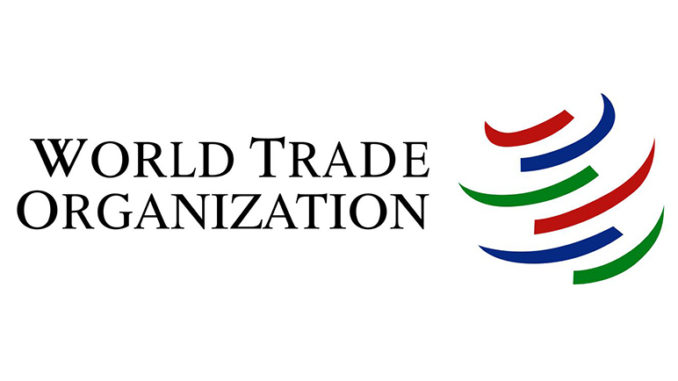
Since he took office, President Trump has announced steel and aluminum tariffs. He has levied $50 billion in tariffs against Chinese products and threatened to impose an additional $100 billion in tariffs against China. However, it is the Trump Administration’s assault on the World Trade Organization (WTO) that might constitute its boldest effort to roll back the existing liberalized trade order.
The President’s undermining the WTO is not a recent reaction to some development he finds unfavorable. It stems from longstanding deep hostility toward the world trade body. Since he launched his Presidential campaign, he has often connected, the WTO to President Bill Clinton to China to American job losses. A November 10, 2015 Trump campaign news release read:
In January 2000, President Bill Clinton boldly promised China’s inclusion in the World Trade Organization (WTO) “is a good deal for America. Our products will gain better access to China’s market, and every sector from agriculture, to telecommunications, to automobiles. But China gains no new market access to the United States.” None of what President Clinton promised came true. Since China joined the WTO, Americans have witnessed the closure of more than 50,000 factories and the loss of tens of millions of jobs. It was not a good deal for America then and it’s a bad deal now. It is a typical example of how politicians in Washington have failed our country
At a June 28, 2016 speech in Monessen, Pennsylvania, Trump was even harsher. He declared, that “China’s entrance into the World Trade Organization has enabled the greatest jobs theft in history.”
Since his election, President Trump has maintained his criticism. At a White House Business Session with Governors held on February 26, 2018, President Trump told his audience in his typical free-wheeling style of speaking:
World Trade Organization—a catastrophe… [T]he World Trade Organization makes it almost impossible for us to do good business. We lose the cases, we don’t have the judges. We have a minority of judges. It’s almost as bad as the 9th Circuit… It’s almost as bad.
The President has objected to the WTO’s rulings, as findings based on the terms and principles of underlying trade agreements are incompatible with his Administration’s “America First” Mercantilism. Therefore, the President blames the WTO’s judges, rails against an inability to stack the WTO’s Appellate Body, and has been pursuing a stealth campaign to imperil the WTO’s functioning. On May 18, 2018, Reuters reported on that effort:
President Donald Trump has the World Trade Organization in a chokehold, and the United States has made clear what he wants: no more judicial rulings that interpret WTO rules to Washington’s disadvantage…
Trump has effectively engineered a crisis in the WTO’s system of settling global disputes by vetoing all appointments of judges to its appeals chamber…
Trump’s veto is reducing what is supposed to be the seven-strong Appellate Body as members’ terms expire. By September four seats will be vacant, leaving three judges, the number required to hear each appeal. If one judge needs to recuse themselves for any legal reason, the system will break down.
The WTO was established “to develop an integrated, more viable and durable multilateral trading system encompassing the General Agreement on Tariffs and Trade, the results of past trade liberalization efforts, and all the results of the Uruguay Round of Multilateral Trade Negotiation.” Trade dispute resolution is a critical element of that system. Article 3 of Annex 2 to the “Agreement Establishing the World Trade Organization” explains:
The dispute settlement system of the WTO is a central element in providing security and predictability to the multilateral trading system. The Members recognize that it serves to preserve the rights and obligations of Members under the covered agreements, and to clarify the existing provisions of those agreements in accordance with customary rules of interpretation of public international law.
Hence, by depriving the WTO’s Appellate Body of the judges it needs to operate, the Trump Administration is actually targeting the global trading system. Once the WTO becomes useless in resolving trade disputes, its Members could lose confidence that body. Then, the Trump Administration might be tempted to use those circumstances as a pretext to exercise its Article XV ability to withdraw the United States from the WTO. Such a development won’t be the first time the Trump Administration has withdrawn the United States from an international agreement.
Should the U.S. withdraw or a sufficient number of Member states lose confidence in the WTO, the world trading system could begin to disintegrate. Trade agreements would then narrow in focus. Populist and protectionist leaders could then be emboldened to more aggressively pursue politically-motivated tariff and non-tariff trade barriers to lock out imports from their countries. Tit-for-tat retaliation could trigger an unraveling of the global trading system.
What would a world of falling trade look like? Consumers would suffer from higher prices, lower product quality, and reduced choice. Supply chains that can facilitate the competitive success of companies and industries would be shattered. Progress in reducing global poverty would be brought to a standstill or even rolled back. The end result would be a less prosperous and more unstable world.
